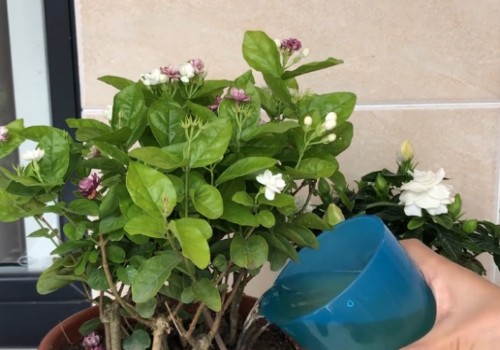Culture methods of northern jasmine flowers
Jasmine is a kind of evergreen shrub, which is very popular because of its beautiful blossom and fragrance. For flowering plants, improper maintenance is often more prone to yellow leaves, fallen leaves, buds and other problems, jasmine is also the case. Therefore, if you want to raise flowers and plants well, you must master some skills, especially in the north of our country.

For jasmine, especially potted jasmine, it is easy to have yellow leaves and buds. So, why does the jasmine yellow leaf drop bud? When we encounter this phenomenon, how should we deal with it? Today, the editor will nag with you and give a scientific solution at the same time.
First of all, when we grow flowers, we must master their growth habits, and then create an environment suitable for their growth according to their habits and characteristics. There are many aspects involved in maintenance management, such as flowerpot selection, potted soil preparation, light and temperature management, water and fertilizer management, pruning and changing pots, and so on.
Jasmine is a kind of evergreen plant which likes warm and humid growth environment. It has the characteristics of slightly sour or slightly acidic stomach, and at the same time, it is afraid of cold, waterlogging and fat, so it is more suitable for planting in the south of China. However, if it is transferred to the north of our country for planting, the maintenance difficulty will often increase a lot, especially in winter.
Because the soil in the northern region is generally saline-alkali, the original and jasmine prefer the sour soil environment, the two are naturally contrary to each other. However, it is generally difficult for plants to adapt to the environment by adjusting themselves, so we need to artificially create a suitable environment for plants to grow. If we leave it alone, it will be difficult for jasmine to blossom and even survive in the north.
In order to raise jasmine in northern China, the first thing that needs to be solved is the high degree of soil salinity. Generally, as a potted plant, we can pour some ferrous sulfate diluent into the potted soil to improve the soil quality and make the potted soil slightly acidic or weakly acidic, which is more suitable for the growth of jasmine. However, in winter in northern China, too low temperature is also a huge test, so winter cold protection and warmth must also be done well.
In winter in the north of China, the temperature is generally much lower than that in the south, and the cold tolerance of jasmine is poor, so we must take timely measures to keep warm and keep warm in winter, so as to ensure that the plant can survive the winter smoothly without frostbite or death. In the north of our country, it is generally moved into the indoor or greenhouse for maintenance to ensure that the temperature is not lower than 5 °C.
But if we put it at home for maintenance, because there are heaters or hot kangs in families in the north of our country, we must avoid heating vents and heaters. Otherwise, the plant will easily die from severe dehydration. Moreover, the winter in the north is dry and cold, and the air humidity is low, and jasmine likes a humid growing environment, so it is often necessary to spray more water around the plant to keep it moist, so as to ensure that it is not frostbitten. There will also be a humidity environment suitable for growth and survival.
In addition, if jasmine is properly managed, it will not only bloom better, but also have a stronger fragrance and a longer flowering period. Because the bud of jasmine opens slowly stubble by stubble. In order to restore plant growth quickly after anthesis and provide guarantee for the next round of flowering, it is generally necessary to prune after anthesis and properly apply fertilizer and water at the same time.
Time: 2019-05-27 Click:
- Prev

Conservation methods of potted jasmine
Many people know jasmine, even more familiar with it. After all, jasmine is a popular flower in China, which is very common, so it is more common. However, jasmine is often loved by people because it blossoms beautifully and smells full of fragrance, and can also be smoked into tea. Jasmine is not only beautiful, but also easy to raise.
- Next

How to maintain jasmine to blossom more
Jasmine is not only evergreen all the year round, but also exudes a pleasant fragrance. Whenever it blooms, it can make people feel relaxed and happy, and give people a deep impression. Therefore, many potted friends who like to grow flowers are willing to plant them as a family pot, especially the family potted jasmine, which can always fill the room with fragrance.
Related
- Fuxing push coffee new agricultural production and marketing class: lack of small-scale processing plants
- Jujube rice field leisure farm deep ploughing Yilan for five years to create a space for organic food and play
- Nongyu Farm-A trial of organic papaya for brave women with advanced technology
- Four points for attention in the prevention and control of diseases and insect pests of edible fungi
- How to add nutrient solution to Edible Fungi
- Is there any good way to control edible fungus mites?
- Open Inoculation Technology of Edible Fungi
- Is there any clever way to use fertilizer for edible fungus in winter?
- What agents are used to kill the pathogens of edible fungi in the mushroom shed?
- Rapid drying of Edible Fungi

